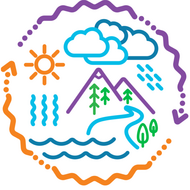Grade 2 and 3: Climate Forecasters from Gonzaga Climate Center
(View Complete Item Description)In partnership with the Washington State Office of the Superintendent of Public Instruction (OSPI) and the legislature-funded ClimeTime program, the Gonzaga Climate Center has created the Climate Literacy Fellows program. This lesson was developed in collaboration with the Gonzaga Science in Action! program. The Science in Action! Program helped test the kits included in these lessons and helped guide Gonzaga undergraduates in developing the accompanying lessons. We thank Gonzaga SIA! for their collaboration and support!
Material Type: Activity/Lab, Interactive, Lesson, Lesson Plan, Simulation




















